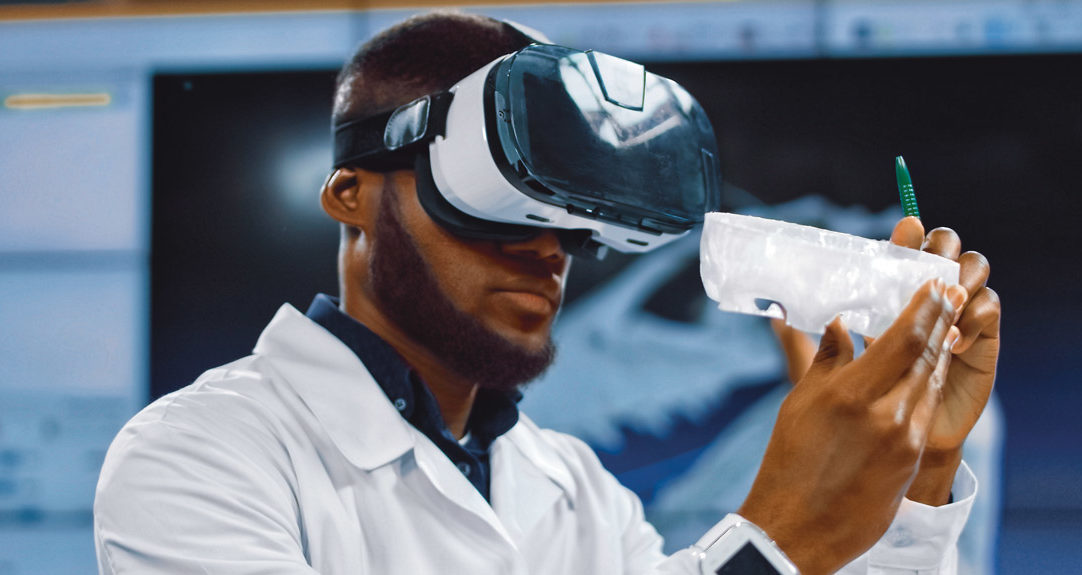Welcome to Media Psychology!
Actuaries need to focus on the behaviors being mediated through emerging technologies April/May 2019You are probably wondering what media psychology is and what it has to do with actuarial work—and rightly so. This issue of The Actuary explores how principles of media psychology are critical to analyzing data in a future mediated by technology, especially those black mirror devices many of us can’t seem to live without. Proceed through the pages of this issue, rich with psychological theory, as a scientist, contemplating innovative methods to measure the behavioral constructs discussed by the psychologists featured in this issue. The psychologists are following in the footsteps of John Watson, who is unquestionably regarded as the father of behavioral psychology, and Marshall McLuhan, who is undeniably the father of media analysis.
The intersection of these two fields provides the foundation for media psychology. Watson shifted the study of psychology from the study of the mind to the study of behavior, observable and measurable through experimentation. McLuhan became obsessed with understanding the importance and power of media on behavior. At the apex of his influence, the word “media” for most meant radio, television and the written word, and McLuhan examined the impact of these media from two perspectives. The first was the perspective of its impact as a new form of media, and the second was the perspective of its impact on the human experience through its use. McLuhan felt the creation of new media was far more important than the ways in which it was deployed.
McLuhan authored the seminal work The Medium is the Massage. It distinguishes the importance of technology from the content it mediates. This sharp contrast in practical terms means the telegraph was more important as an invention than the messages it was used to transmit, the television more important than the broadcasts, the internet more important than any one website. Now enter virtual, augmented, mixed and hyper reality, which McLuhan might deem more important than the sensations created by each form. In Understanding Media,1 McLuhan writes: “The message of any medium or technology is the change of scale or pace or pattern that it introduces into human affairs. The railway did not introduce movement or transportation or wheel or road into human society, but it accelerated and enlarged the scale of previous human functions, creating totally new kinds of cities and new kinds of work and leisure.”
We find ourselves in times as revolutionary as those introduced by the railway system. The factorial growth in the use of new media to transact our daily lives is accelerating our disconnectedness from human interactions, requiring a new kind of psychology to enhance and monitor the deployment of this new media and to understand how human behavior is massaged by it. Black mirror devices are capable of navigating through and transmitting petabytes of data to inform decision-making for users at both ends of the connection. We’ve come a long way since two Campbell soup cans and a piece of string. (I must be careful here because millennials might not get the reference, but they have Google, so I’ll continue.) Our explosive use of media to navigate our lives and our visions for its future use have not been unaccompanied by fear. Fear is a normal response to innovation, and history supports this. According to Brett King, since the industrial age, technology disruptions have obsoleted many labor-intensive processes, incited worker protests and altered employment patterns.2 The internet has had no less of an effect on the human response to its innovation. A study conducted by McKinsey & Company in 2011 estimated the internet created 2.6 jobs for each lost to technology-related efficiencies.3 Immersive technologies and artificial intelligence (AI) are the new internet, introducing new fears that will need to be overcome to maximize their benefits to the human experience.
Media psychology is critical to understanding these concerns as immersive technologies become more advanced and available for integration with our lives. Some will fight this integration for themselves, their loved ones and society, reminiscent of the early Luddites who smashed steam engines to prevent their dominance in the textile industry of the early 1800s. Modern-day Luddites will fail in their quest to derail immersive technology integration and, instead, find membership among a minority who don’t use the internet. The Pew Research Center estimates this number at 10 percent for reasons correlated with age, educational attainment, household income and community type.4 Many of these disconnected few require a special kind of psychology for integration, because we are not going backward to appease their need for “old-school” conventions. The old ways are out, and more new ways are coming.
As actuaries, we need to think beyond Excel, Python and R code and focus on the behaviors being mediated through emerging technologies. The information highway is no longer a highway—it is a hyperspace, with topological properties that advanced technologies will need to thrive on data as its life blood, and where data privacy must become a nonissue. Watson and McLuhan left a strong intersection of research to study this data holistically, rather than in fragments, to improve insured risk profile development in real-time. Please enjoy this issue.
References:
- 1. McLuhan, Marshall. 1964. Understanding Media: The Extensions of Man. New York: McGraw-Hill. ↩
- 2. King, Brett. 2016. Augmented: Life in the Smart Lane. Tarrytown, New York: Marshall Cavendish Editions. ↩
- 3. Pélissié du Rausas, Matthieu, James Manyika, Eric Hazan, Jacques Bughin, Michael Chui, and Rémi Said. Internet Matters: The Net’s Sweeping Impact on Growth, Jobs and Prosperity. McKinsey & Company, May 2011, (accessed February 27, 2019). ↩
- 4. Anderson, Monica, Andrew Perrin, and Jingjing Jiang. 10% of Americans Don’t Use the Internet. Who Are They? Pew Research Center, April 22, 2019, (accessed April 26, 2019). ↩
Copyright © 2019 by the Society of Actuaries, Schaumburg, Illinois.

